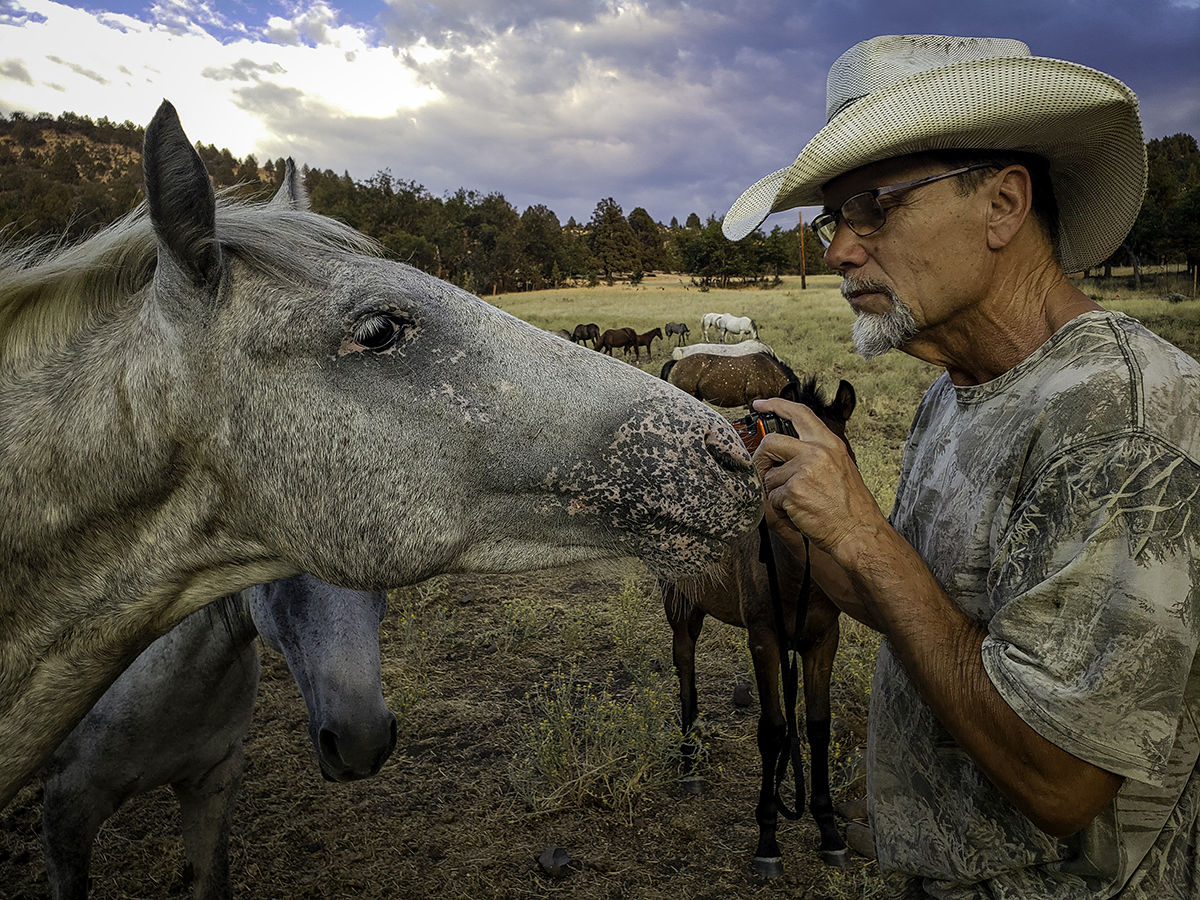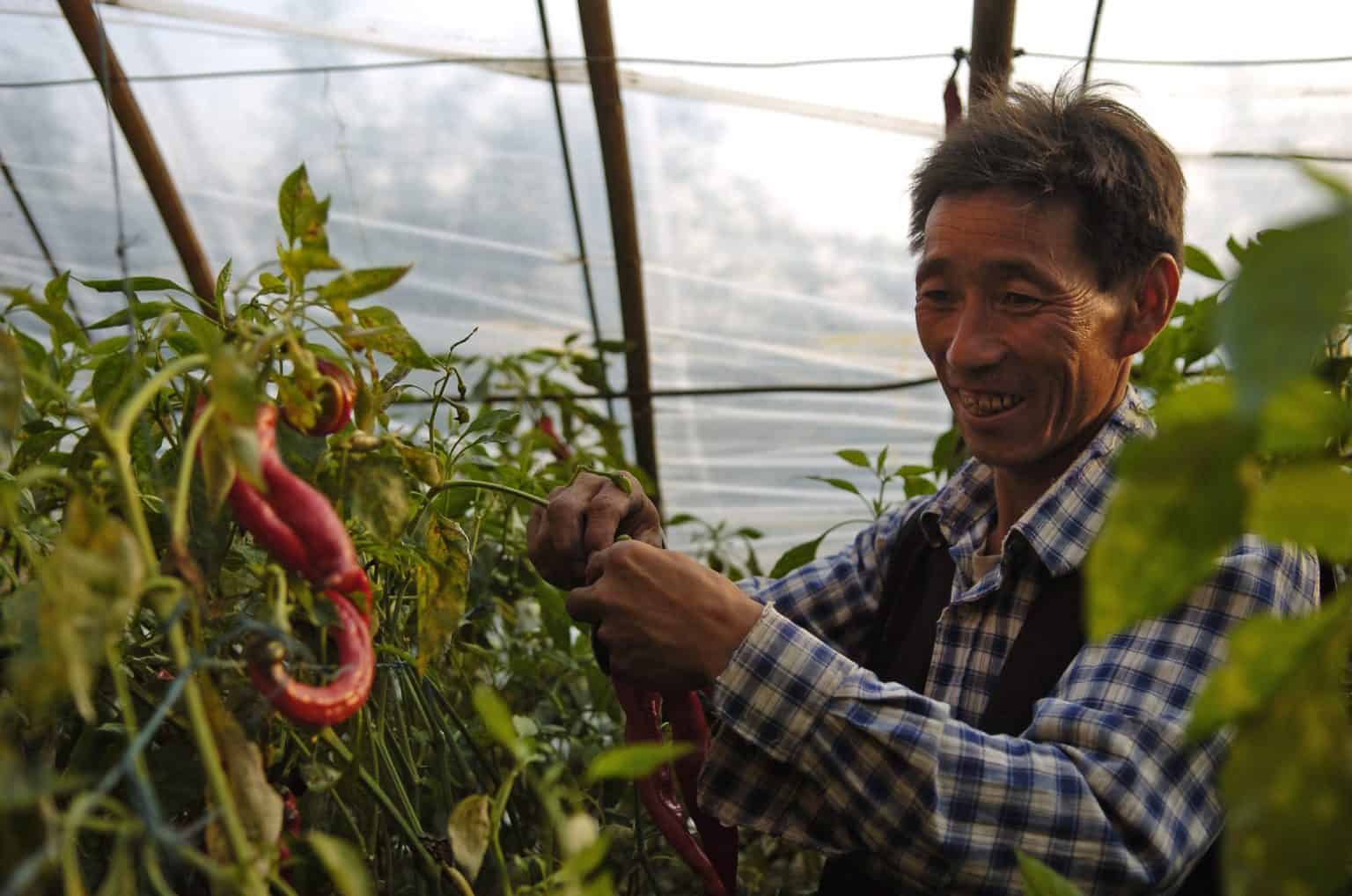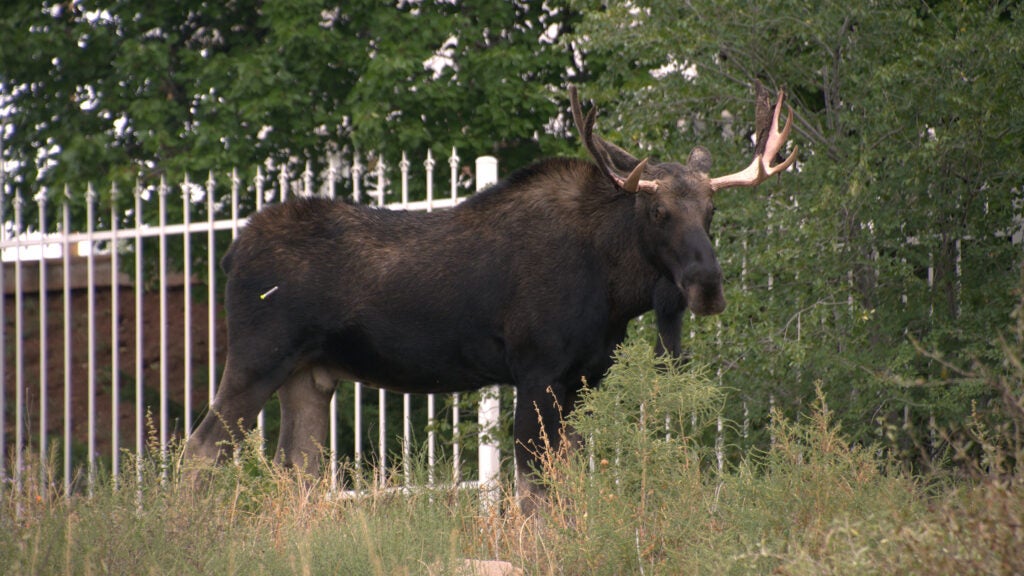The controversial animals graze on the grass and brush that fuel blazes. So one California naturalist asks: Why not send them to fire-prone wilderness?
In 2014, William E. Simpson moved to a remote hillside near Yreka, California, close to the California-Oregon border. He was trying to get away from his previous buzzing internet business, seeking isolation in nature. It didn’t take him long to notice that he wasn’t alone: He was sharing the hills surrounding his humble cabin at the edge of the Cascade-Siskiyou National Monument with bobcats, coyotes, elk, mountain lions, wolves, bears and more than 120 wild horses. At first, the horses kept their distance, just like all the other wild animals.
But eventually, a skinny, pregnant white mare with a foal in tow approached him. Simpson had once studied veterinary medicine, and his training kicked in. “I thought she was probably suffering from parasite overload and fed her some oats with an anti-parasite I had on hand,” he recalls. A few days later, the mare brought her entire family. Over the years, the horses have come to him with injuries, such as cuts from the barbed wire abandoned farms had left behind or gashes from mountain lion attacks.
“It’s all voluntary,” Simpson says. “They are wild. You can’t put a halter or anything over their head. They just come and present their injuries. Some let you do more than others.”
When the 38,000-acre Klamathon fire tore through the hillsides in 2018, he had an “aha” moment. He and his wife Laura defied evacuation orders and helped the firefighters navigate the remote dirt roads. They stayed to defend their small ranch, but also to watch the horses. “I wanted to see how the horses reacted to the fire,” Simpson says. “Would they panic? Run the opposite direction and get entangled? Nobody had ever really done a study about that.”
The horses remained calm and kept grazing. “They are used to fires,” Simpson realized. “They have been here for two million years.” He now attributes the fact that his cabin and the surrounding hills were largely spared by the fire to the horses. “Each wild horse consumes about 30 pounds of grass and brush a day,” Simpson has observed. “They reduce the wildfire fuel, keeping the wildfire risks at bay.”
Over the last 10 years, Simpson has grown into a fierce defender and protector of “his” herd.
Since 2021, he has officially owned the herd and has had management authority, because the Siskiyou County Agricultural Commissioner formally recognized his work.
In 2022, Simpson founded a nonprofit and named it after his mission: Wild Horse Fire Brigade.
With his nonprofit, Simpson is proposing a large-scale solution to several issues that have long been the subject of furious debate across the American West: He wants to free the roughly 60,000 horses that are currently kept in Bureau of Land Management (BLM) corrals and relocate them strategically to the nation’s more than 110 million acres of designated wilderness and other open land, where they could keep grasses and vegetation in check as keystone herbivores. “They naturally protect forests, wildlife, watersheds and wilderness systems,” he says. “Keeping wild horses in captivity is like keeping the fire department in jail during fire season.”
While the climate crisis has increased temperatures and fire danger, studies show that the steep decline of large herbivores such as deer and wild horses contributed to the abundant growth of grasses and brush that fuels fires’ devastation. Simpson calls his proposal a win-win-win: “Taxpayers save money, wildfires are kept in check, and the horses get to live wild.”
Historically, wild horses and burros were granted federal protection in 1971 after Congress recognized that these “living symbols of the historic and pioneer spirit of the West” were “fast disappearing from the American scene.” Congress outlawed “capture, branding, harassment or death” of wild horses and burros.
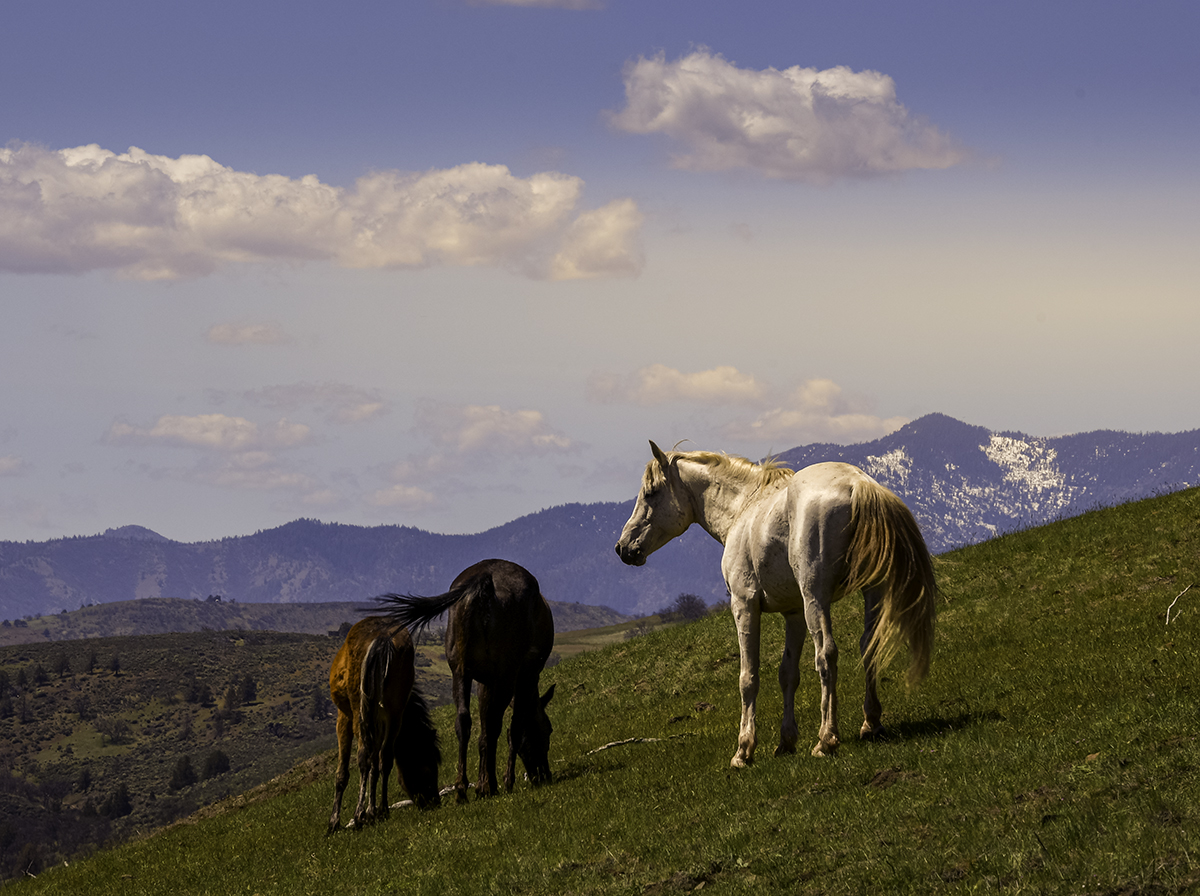
The protection measures led to a rapid increase in their numbers, and the BLM was tasked in the mid-1970s with managing the herds. According to its statistics, the BLM removed over 20,000 horses and burros in 2022 alone, while leaving just 82,000 in the wild.
The BLM practice of rounding up wild horses with helicopters — which often causes panic among the herds — and keeping the majority of them captive in corrals has opened the agency to much criticism.
For instance, hundreds of horses were removed from the Sand Wash Basin in Colorado in 2021 to make space for private ranchers’ livestock. “They’re removing the horses for the sake of cheap meat,” Simpson comments.
Also controversial are the costs: In 2022, the BLM spent $138.5 million of taxpayer money on capturing, managing and feeding the horses.
And while auctioning off wild horses to slaughterhouses is theoretically illegal, rescuers regularly find horses with BLM branding at slaughter auctions.
Over the years, Simpson has added to his herd more than 50 wild horses he and a group of volunteers saved from slaughter.
When asked about the suggestion to rewild the horses “for natural wildfire abatement,” the BLM states that it “does not have the legal authority to place wild horses in Wilderness Areas.” The BLM suggests that “using wild horses to reduce fuels could also cause ecological problems,” including reducing native plant and animal diversity through intense grazing.
Simpson dismisses the BLM statements as “propaganda” and has hired a lawyer who argues that counties and fire departments do have the authority to request any number of wild horses for fire protection. While the BLM points out that starting new populations of horses “would lead to uncontrolled herd growth,” because “predation doesn’t typically limit herd growth,” Simpson counters with the firsthand example of his herd.
Predators brought his herd down to 57 adult horses at its lowest point. Simpson argues that the BLM’s claims of overpopulation are vastly exaggerated. “In the early 1900s, there were two million wild horses in North America,” he says, and though there is less open land available to the horses now, predators such as pumas and bears keep the population in check while coyotes often take young foals: “Only the fastest, most resilient horses make it.”
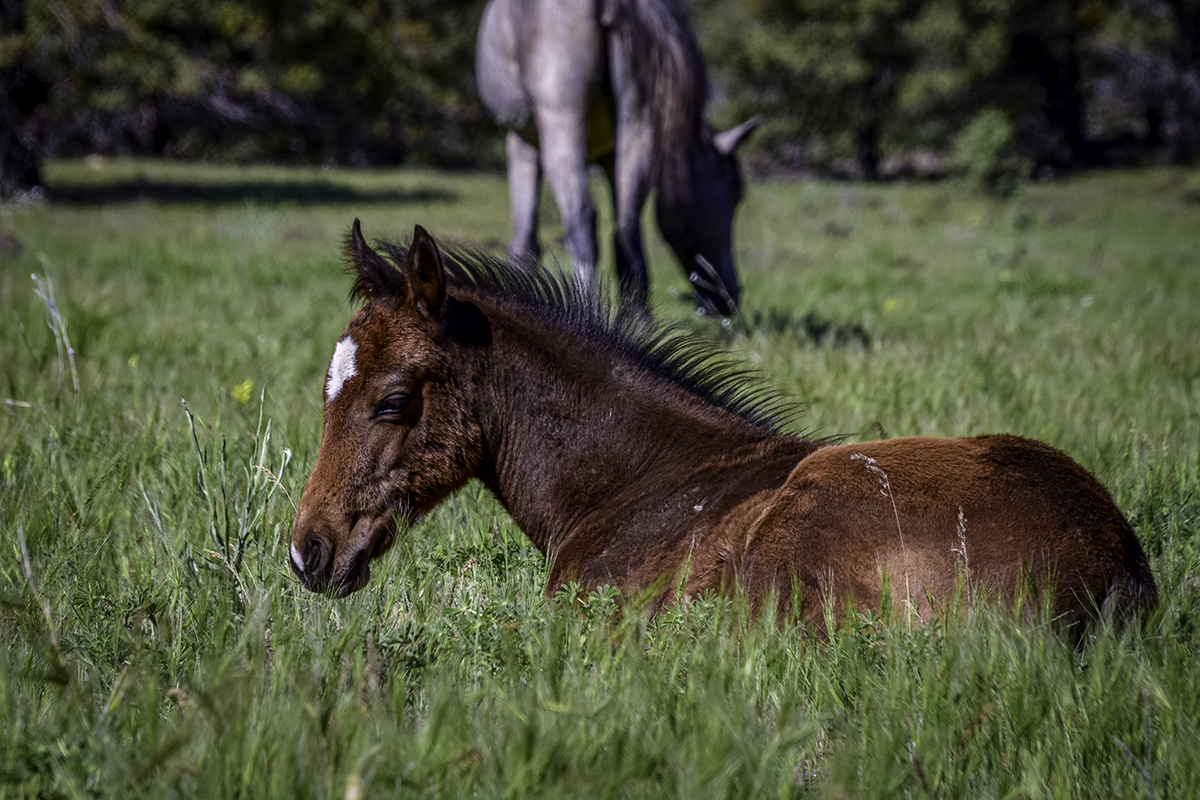
Simpson undertook a five-year-study to show that wild horses are significantly more beneficial for the flora than livestock because unlike cows or sheep, “wild horses will move through an area much faster than invasive species livestock do. This behavior allows the grasses and plants to recover quickly from the light grazing-browsing.”
Simpson picks up dried horse manure to demonstrate that wild horses naturally distribute the seeds of native plants across wilderness areas, while ruminant cattle and sheep don’t because they digest them.
Crushed by negative news?
Sign up for the Reasons to be Cheerful newsletter.
Several experts have backed Simpson’s findings and share his fear that the BLM is managing wild horses into extinction, including David Phillipps, the bestselling author of Wild Horse Country. “The BLM is ignoring all science,” Phillips says in a video interview. “The truth is that the mountain lions evolved with the horse population. Why does the BLM not recognize predation could be a way to manage the herd sizes?”
Endocrinologist John Turner, a University of Toledo professor and reproduction specialist who argues for the use of horse contraception, found in a 25-year-study that mountain lions prevented the numbers of wild horses in Nevada from significantly increasing.
Julie Murphree, Arizona State University professor of wildlife management and biological ethics, and ecologist Wayne Linklater at California State University, Sacramento, have joined Simpson’s board of advisors.
“We need to reframe our entire relationship with wild horses and wild landscapes,” says Linklater, who wrote his PhD thesis about wild horses in New Zealand, and calls the current management of wild horses “the result of a broken system.”
He hopes that private landowners will try out Simpson’s idea and reintroduce wild horses so that the concept can be tested in real time: “I don’t doubt that a grazed meadow is going to stop or at least slow a fire.”
So far, Simpson has mostly studied the herd with what he calls the “Goodall method,” in honor of primatologist Jane Goodall: Every morning he spends hours outside observing the horses without interfering, filling his notebooks with information about their behavior, health and numbers.
A recently-begun five-year project with California State University, Sacramento, which has already sent its first two students to Cascade-Siskiyou for field study, aims to put Simpson’s findings on a more solid scientific basis. Simpson hopes to establish a full census and catalogue the horses, including doing an ethogram (inventory of behaviors) and genetic testing to determine their heritage.
Simpson grew up with horses, cattle, sheep and pigs on a ranch in Southern Oregon, about 100 miles from where he lives now. With their resilience and speed, the wild horses seem to him quite different from the domestic horses he knew in his youth. “They’re very powerful, very compact and very fast,” he says. “Some of our stallions are built like rhinoceroses with very big, strong necks and short backs that are not suitable for a saddle, but ideal for the terrain they have to survive in. They are also disease resistant and recover from most injuries on their own.”
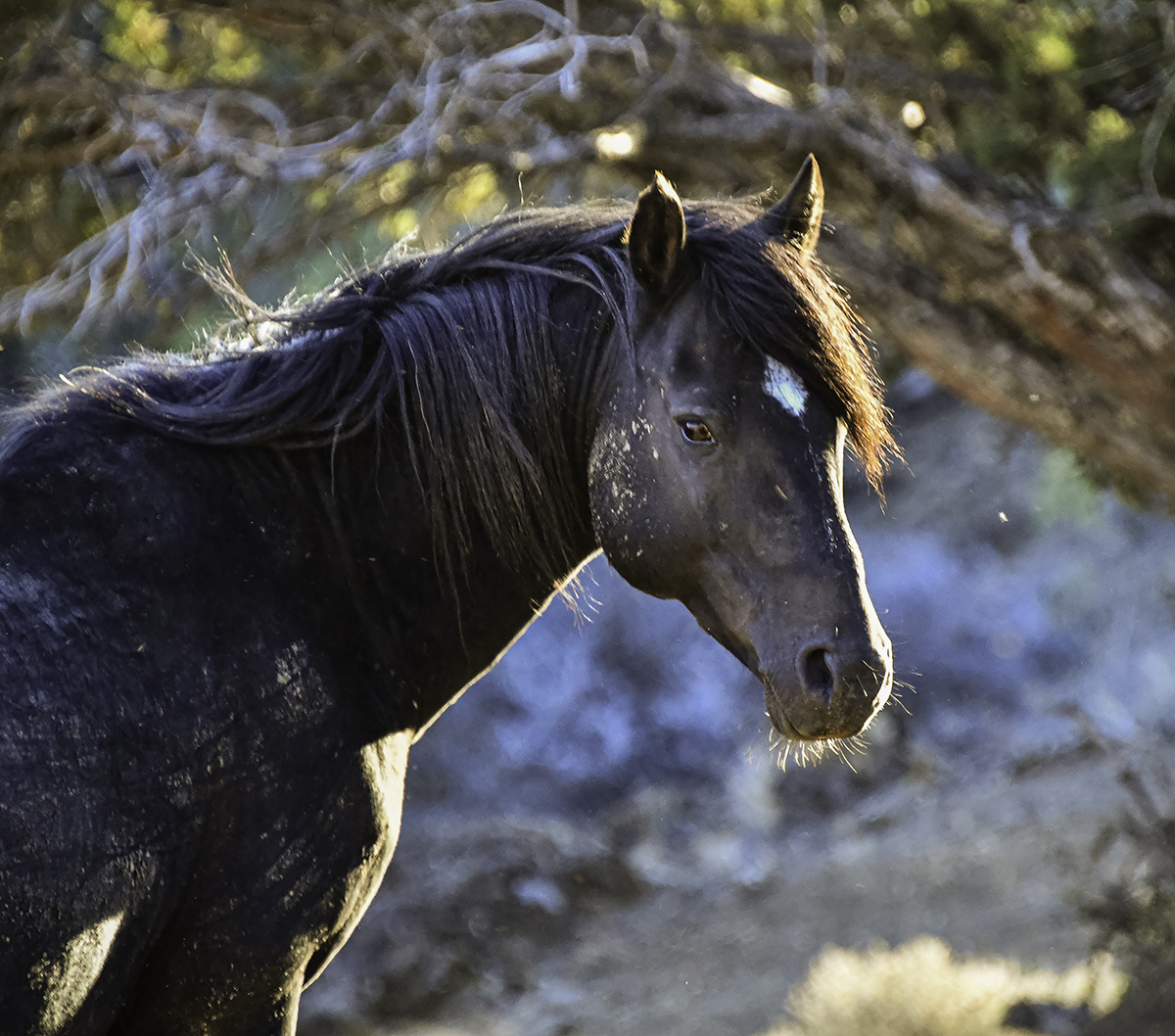
Before finishing his veterinarian training, Simpson flew helicopters and airplanes in South America, worked as a gemologist for museums and jewelry chains, and ended up founding various businesses, including offering helicopter rides, limousine charter and fishing boat charter in Hawaii.
Feeling “burnt out after a decade of working 24/7,” he took his wife and two children on a four-year sailing cruise to the Sea of Cortez on a boat he mostly built himself. It was the experience of being immersed in nature that made him seek out the mountains after their return. Tragically, his wife Laura passed away from the consequences of smoke inhalation nine months after the Klamathon Fire in 2019. He now lives on the land with his new partner, Michelle Gough, and has found healing and a new purpose with the horses.
He is convinced that the horses can heal more than the land. When a veteran with severe PTSD visited him on the ranch, a stallion Simpson had named Black Fury approached the man on its own. “My friend had been blown up in a police station in Mosul and was hospitalized for years because of his extensive injuries,” Simpson recounts. His visitor was hesitant, but Simpson encouraged him to gently pat the horse. “There was a minute where that stallion was just staring at him.” Simpson says the encounter changed his friend’s life: “Rolland felt that someone put a warm blanket over him. From that day forward, he started healing. He said, ‘Black brought me home.’”

